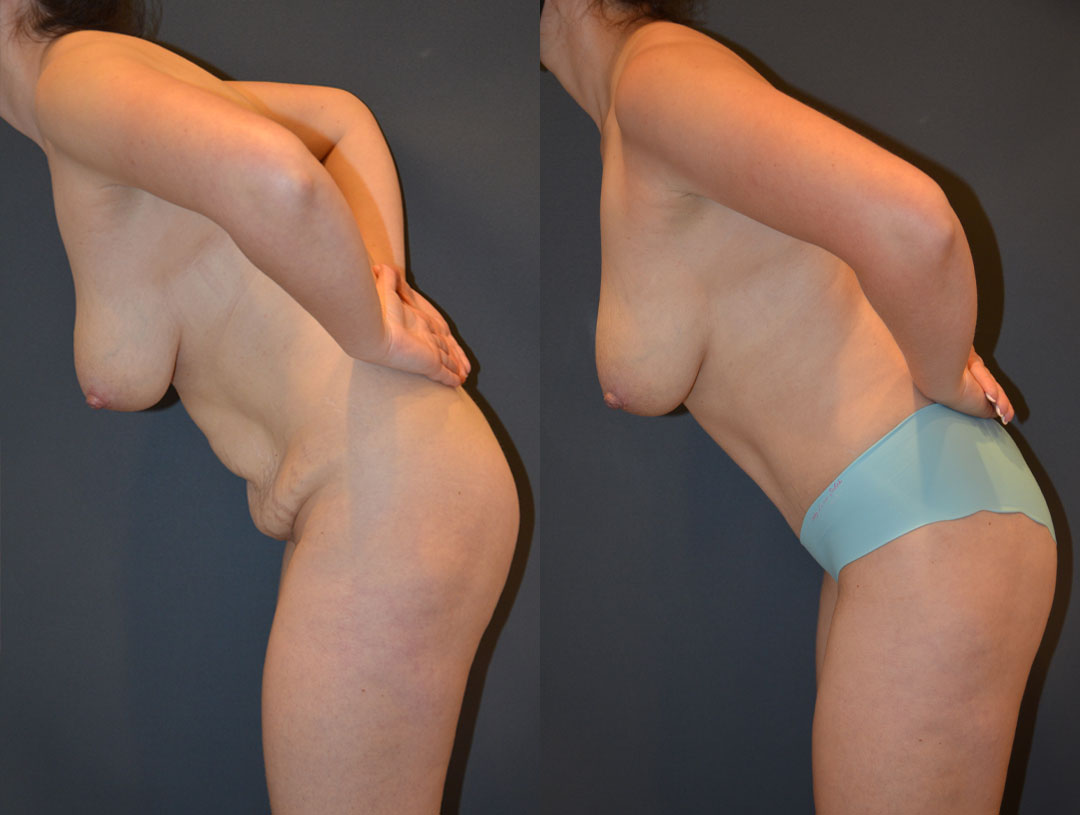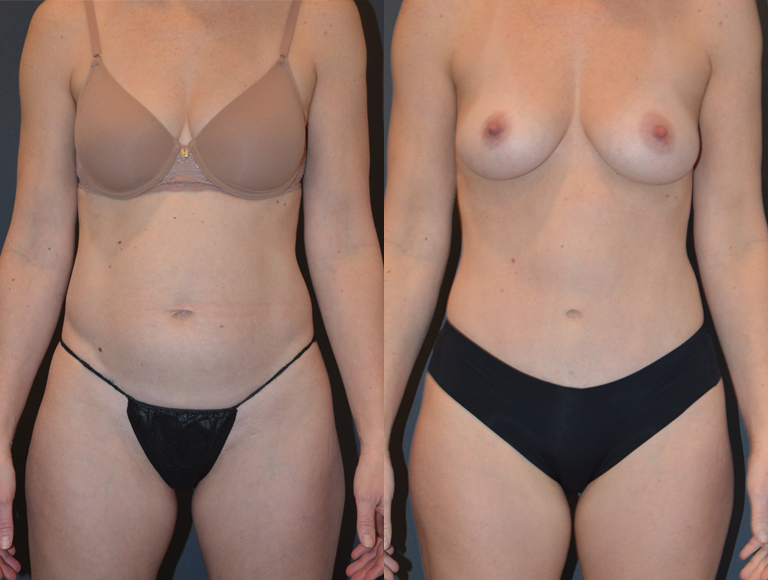For some, a tummy tuck is necessary to bridge the gap between healthy living and visible results.
Not sure if a tummy tuck is right for you? Learn more from NYC plastic surgeon Dr. Preminger.
Tummy tuck in New York City
NYC abdominoplasty specialist Dr. Preminger can give you the smooth, toned tummy you’ve struggled to achieve through exercise and diet alone. No matter how many crunches you do, paunches of fat and loose skin on your waistline may remain stubbornly unimproved. In these cases, tummy tuck surgery may be the only way to restore youthful firmness to your abdomen.
A tummy tuck is a body contouring procedure that restores abdominal contour by tightening the muscles of the stomach wall like an internal corset, while eliminating excess and damaged skin. Often, tummy tuck surgery is combined with targeted liposuction to achieve a waist with an optimal contour.
Weight loss, aging and pregnancy can significantly impact the body over time, particularly the abdominal area. Common concerns include stretch marks, excess skin, Cesarean scars, and sagging or separated abdominal muscles, a condition known as Diastasis Recti. This separation of the abdominal muscles is especially common after pregnancy and can result in a protruding belly that exercise and weight loss alone cannot correct. Unfortunately, these issues often persist despite a healthy lifestyle, making surgical intervention the most effective solution for restoring a smooth, firm abdomen.
Last year, U.S. plastic surgeons performed 111,986 tummy tuck surgeries. Abdominoplasty is the sixth most popular cosmetic procedure after breast augmentation, rhinoplasty, eyelid surgery, liposuction, and facelifts. According to the American Society of Plastic Surgeons, the number of tummy tucks performed has increased by 79% since 2000. Over the years, techniques have improved, giving patients very satisfying results.
Before & After

Before & After


Preparing for tummy tuck surgery
Prior to a tummy tuck, patients meet with Dr. Preminger for a full examination and consultation. Dr. Preminger will ask about personal health history, discuss any risk factors, and choose a procedure or combination of procedures that will best achieve the desired goals. If there is only moderate excess skin without muscle laxity, a “mini-tuck” procedure may be recommended, which involves a shorter incision and quicker recovery.
It is imperative that patients are open and honest about their full medical history. Keep in mind that there may be other minimally invasive procedures that can improve the look of the abdomen without surgery.
Prior to surgery, Dr. Preminger may recommend:
- Four weeks: Stop smoking.
- Two weeks: Up your intake of protein, vitamin C and zinc to speed healing. Avoid herbal supplements, aspirin, anti-inflammatory drugs, and alcohol, as these have been known to increase bleeding.
- One week: Prep your home for recovery, with loose, comfortable clothes and pillows. Helpful items include ice packs and petroleum jelly for incision sites.
- One day: Make arrangements to have someone drive and stay with you on surgery day and through the night for monitoring.
Abdominoplasty (Full Tummy Tuck)

Procedure
The tummy tuck procedure is performed with a horizontal incision below the bikini line, just above the pubic area. Excess fat and skin are removed directly, while abdominal muscles are tightened and repaired. In serious cases of distortion, the navel may need to be repositioned with very fine sutures.
Liposuction body contouring is often used in conjunction with the standard tummy tuck to provide patients with the most natural, aesthetically pleasing results. The whole process takes about three to four hours and is done under general anesthesia.
Recovery
Most patients take two or three weeks off from work. After tummy tuck surgery, the surgeon will leave two drains in place for as little as 3-5 days or as much as 15 days, depending on the amount of fluid draining. These drains are “pinned” in place with a makeshift gauze belt or support garment. During this time, it’s most comfortable to wear large “granny panties.” Each day, the patient will empty the small bulbs at the bottom of the drains – a very easy procedure.
Once the surgeon removes the drains and stitches, full healing is just around the corner. While walking is recommended after a week, light exercise such as biking or elliptical training can be resumed after one month. A compression garment is worn for six weeks. After that, more strenuous activity can be resumed.
Abdominoplasty in New York City
If you would like to learn more about having a tummy tuck in Manhattan or receive information regarding other procedures that may suit you, contact Dr. Preminger for a private consultation or call us at (212) 706-1900.
